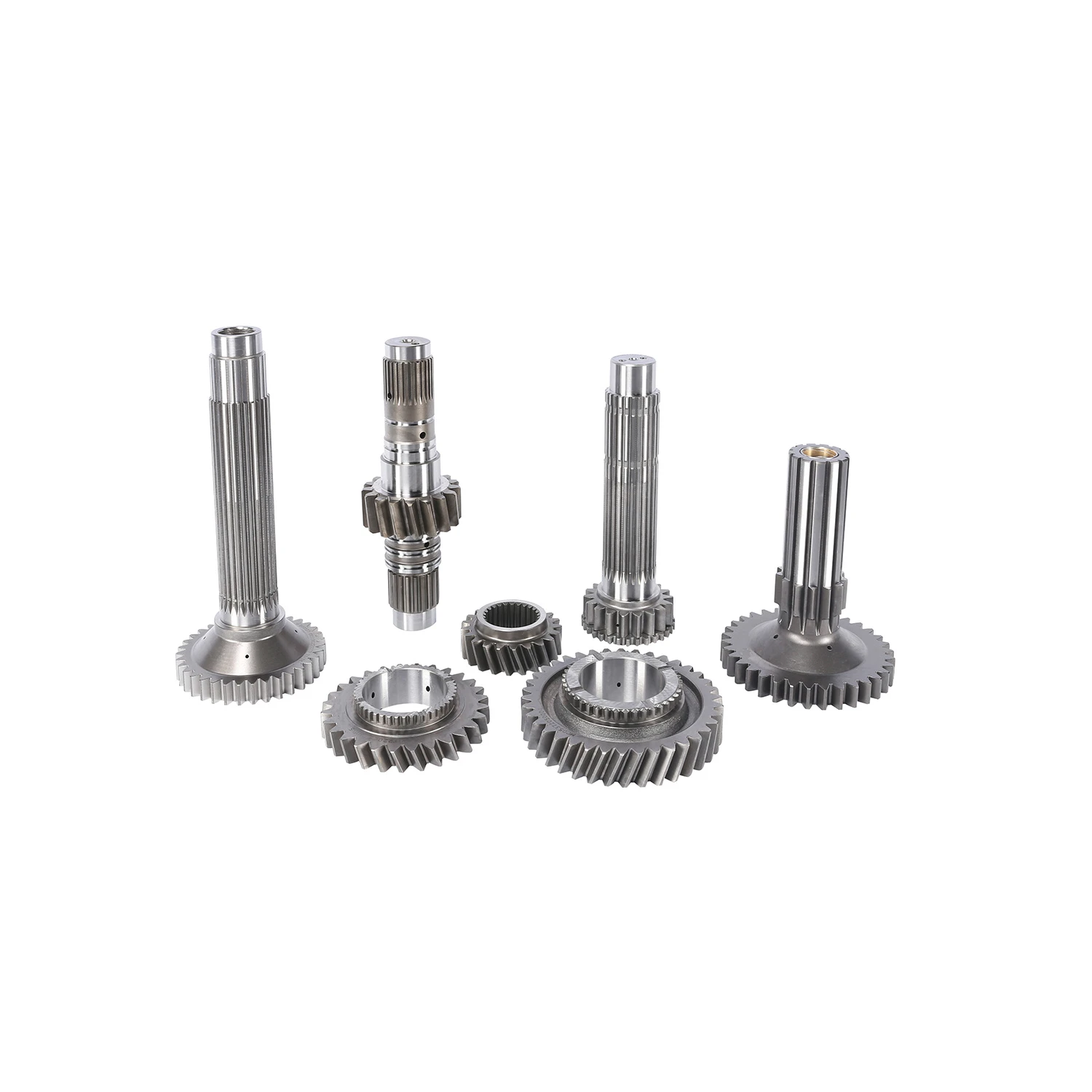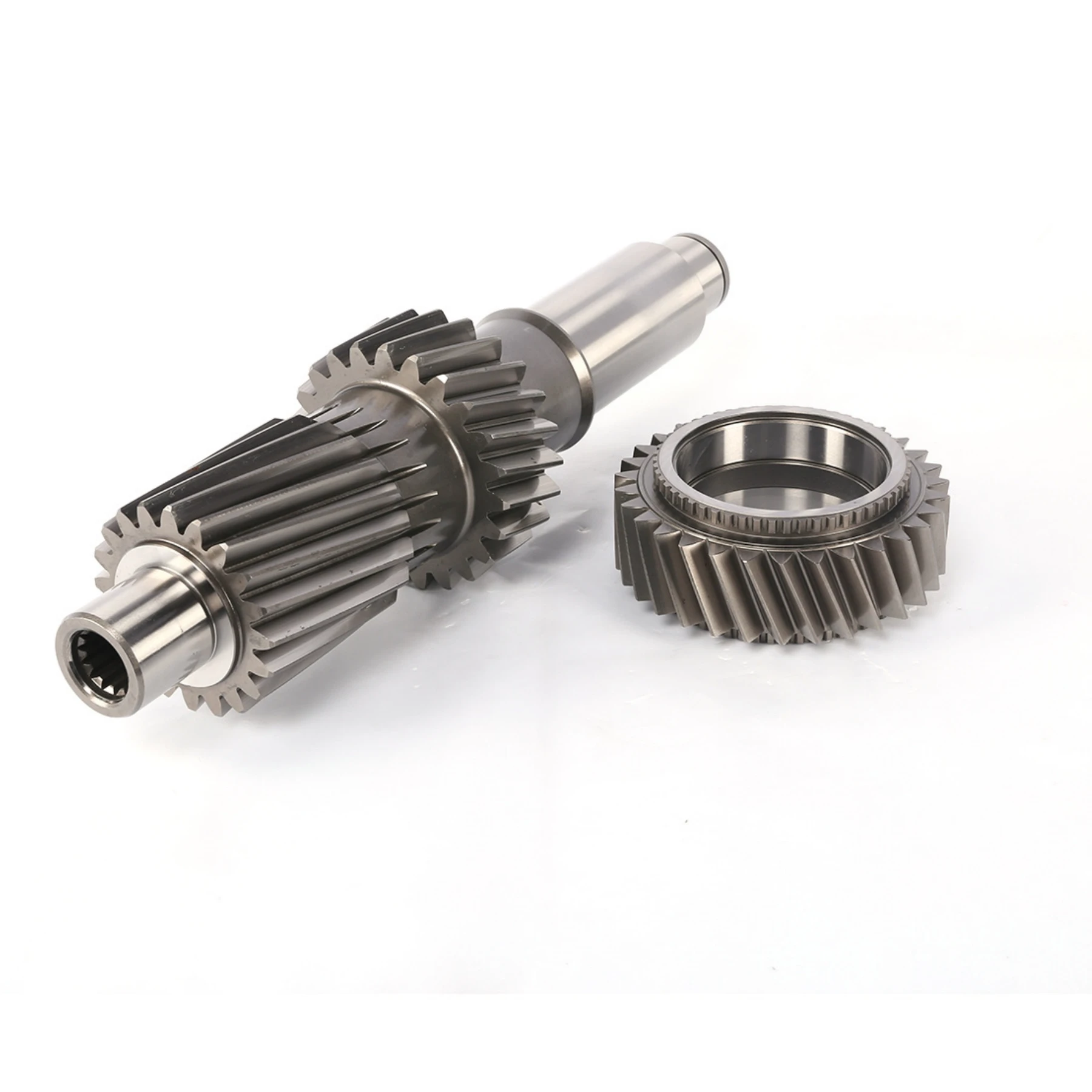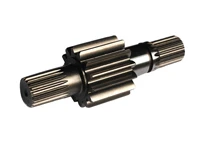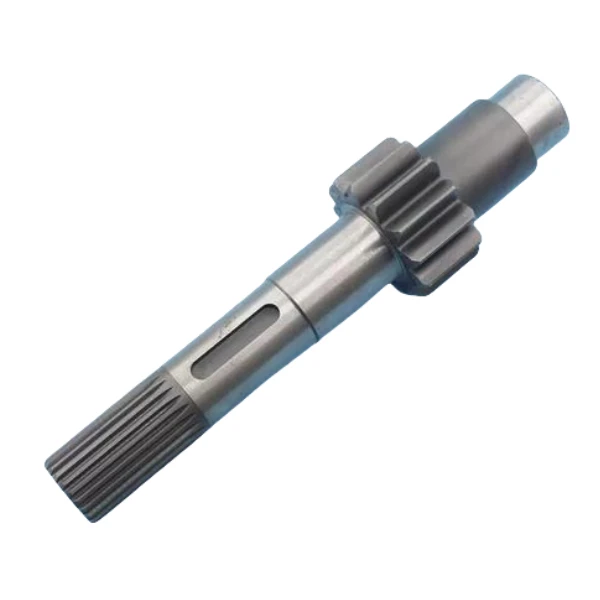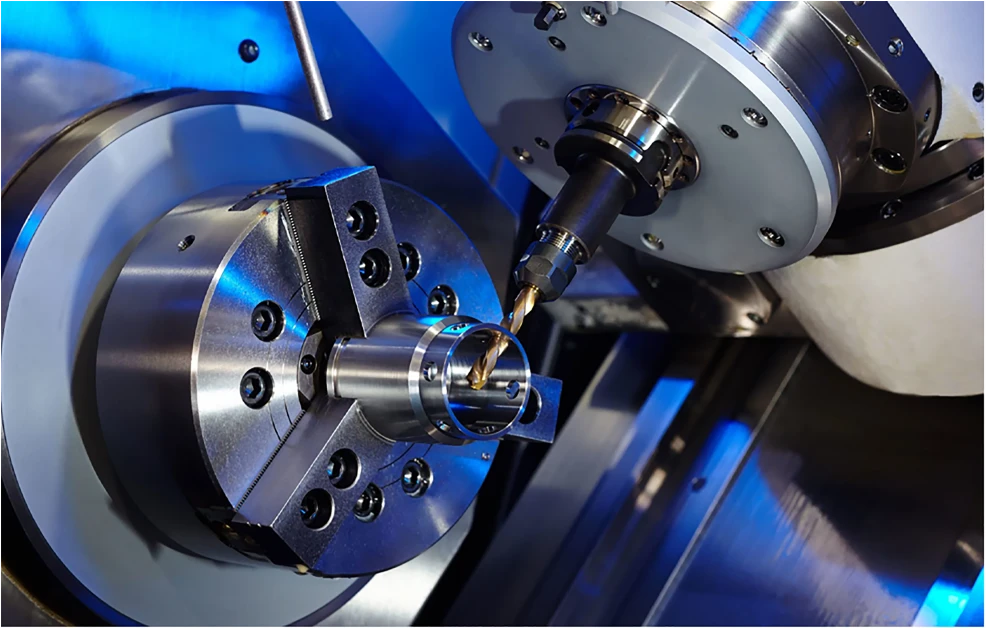Low Disturbance Seed Drill: Boost Yields, Preserve Soil Health
Industry Trends in Precision Agriculture and Low Disturbance Seeding
The agricultural sector is undergoing a significant transformation driven by the imperative for enhanced efficiency, sustainability, and productivity. Central to this evolution is precision agriculture, which leverages advanced technology to optimize inputs and minimize environmental impact. Within this paradigm, the low disturbance seed drill has emerged as a critical innovation, directly addressing the growing demand for conservation tillage practices.
Global trends indicate a substantial shift towards no-till and minimum-till farming, primarily driven by concerns over soil erosion, soil health degradation, and water retention. According to a recent report by the Food and Agriculture Organization (FAO), conservation agriculture practices, including low disturbance seeding, are now adopted on over 200 million hectares worldwide and are rapidly expanding. This method significantly reduces soil disturbance, thereby preserving soil structure, enhancing organic matter content, and promoting beneficial microbial activity. Such practices lead to improved water infiltration, reduced runoff, and lower fuel consumption due to fewer passes across the field.
Technological advancements are continuously refining the capabilities of the low disturbance seed drill. Integrated GPS guidance, variable rate seeding capabilities, and real-time monitoring systems are becoming standard features, allowing for unprecedented precision in seed placement and depth. This level of control is crucial for optimizing plant stands, especially for crops like maize where precise spacing and uniform emergence are paramount for yield maximization. The market for precision planting equipment is projected to grow at a CAGR of 12% through 2027, underscoring the increasing adoption rates among commercial growers globally. Furthermore, the push for reducing carbon footprints in agriculture is accelerating the development of more fuel-efficient and electrically powered seeding solutions.

Manufacturing Process Flow of a Low Disturbance Seed Drill
The manufacturing of a modern low disturbance seed drill, such as the Pneumatic High Speed Seeder, involves a meticulous multi-stage process, ensuring durability, precision, and extended service life. The entire process adheres to stringent quality control standards, including ISO 9001 for quality management and relevant ANSI standards for material specifications and component tolerances, thereby guaranteeing reliability for target industries such as large-scale grain farming, specialized crop production, and agricultural contracting services.
Key Stages of Production:
- Design and Engineering: Utilizing advanced CAD/CAM software, initial designs are developed, focusing on optimal furrow opener geometry, seed metering accuracy, downforce systems, and frame robustness. Finite Element Analysis (FEA) is employed to simulate stress points and ensure structural integrity under various field conditions.
- Material Selection and Preparation: High-strength steel alloys (e.g., ASTM A572 Grade 50 for structural components, wear-resistant tool steel for openers and coulters) are chosen for their superior strength-to-weight ratio and resistance to abrasive soil conditions. Materials undergo rigorous inspection upon arrival to ensure compliance with specifications.
-
Component Fabrication:
- Frame Manufacturing: Large structural components are precision laser-cut or plasma-cut from steel plates. Robotic bending machines form complex profiles with high accuracy. Welding is performed by certified welders, often using robotic MIG/MAG welding for consistent, high-strength joints, followed by non-destructive testing (NDT) such as ultrasonic or magnetic particle inspection.
- Precision Machining (CNC): Critical components like seed metering units, gearboxes, and hydraulic manifold blocks are machined on multi-axis CNC machines. This ensures micron-level tolerances for components that directly impact seeding accuracy and operational longevity. For instance, the vacuum plate of a maize seed drill machine requires exceptional flatness and hole uniformity.
- Casting/Forging: Certain high-wear parts, such as some furrow opener tips or closing wheel hubs, may be cast from durable alloys (e.g., high-chrome white iron) or forged for maximum strength and impact resistance. These components are then heat-treated to achieve optimal hardness and toughness.
- Surface Treatment: Components undergo thorough cleaning and surface preparation (e.g., sandblasting) before receiving protective coatings. Powder coating is widely used for its superior adhesion, impact resistance, and corrosion protection, extending the service life significantly, especially in harsh outdoor environments. Zinc plating or galvanization may be applied to smaller, critical components for enhanced rust prevention.
- Assembly: Sub-assemblies (e.g., individual row units, hydraulic systems, electrical harnesses) are built and tested independently before final integration. The main frame then proceeds to final assembly where all components, including hoppers, planters, closing wheels, and monitoring systems, are meticulously fitted.
- Quality Control and Testing: Each completed low disturbance seed drill undergoes a comprehensive series of tests. This includes functional testing of the pneumatic system, seed metering accuracy tests using simulated seed, hydraulic system pressure tests, and electrical system diagnostics. Field simulations may also be performed to verify downforce mechanisms and furrow closing effectiveness. Critical parameters like depth consistency and seed spacing are precisely calibrated.
- Packaging and Logistics: After passing all quality checks, the equipment is securely packaged, often partially disassembled for efficient transport, and prepared for shipment.
This rigorous process ensures that each Pneumatic High Speed Seeder offers superior energy saving through reduced tillage and exceptional corrosion resistance due to advanced material selection and surface treatments, providing a typical service life exceeding 10,000 operational hours with proper maintenance.
Technical Specifications: Zinan Pneumatic High Speed Seeder
The Zinan Pneumatic High Speed Seeder is engineered to deliver unparalleled precision and efficiency in conservation tillage. Designed for high-speed operation while maintaining minimal soil disturbance, this machine embodies advanced agricultural technology.
Product Specification Table: Zinan PHS-Series Low Disturbance Seed Drill
| Parameter | Specification |
|---|---|
| Model Series | PHS-6 / PHS-8 / PHS-12 |
| Number of Rows | 6, 8, 12 (Configurable) |
| Row Spacing | Adjustable: 35 cm - 80 cm |
| Working Width | PHS-6: 2.1m - 4.8m | PHS-8: 2.8m - 6.4m | PHS-12: 4.2m - 9.6m |
| Working Speed | 8-15 km/h (depending on field conditions) |
| Seed Hopper Capacity | PHS-6: 400L | PHS-8: 550L | PHS-12: 800L |
| Fertilizer Hopper Capacity | PHS-6: 600L | PHS-8: 800L | PHS-12: 1200L (Optional) |
| Power Requirement | 80-200 HP (Tractor dependent on model) |
| Furrow Opener Type | Single Disc with Integrated Gauge Wheel for Minimal Disturbance |
| Seed Metering System | Pneumatic Vacuum Precision Metering |
| Downforce System | Hydraulic or Spring-Adjustable Individual Row Unit Downforce |
| Monitoring System | In-cab monitor for real-time seed flow, spacing, and population |
| GPS Compatibility | Yes, for section control and variable rate application |
| Applicable Seed Types | Maize, Soybean, Sunflower, Sorghum, Rapeseed, Small Grains |
| Compliance | ISO 9001:2015 Certified, CE Compliant |
The core of the Zinan system lies in its pneumatic vacuum precision metering, which ensures accurate singulation and consistent seed drop. This technology, combined with robust single-disc openers, minimizes soil disturbance while achieving optimal seed-to-soil contact, critical for rapid and uniform germination, particularly for a maize seed drill.
Application Scenarios and Technical Advantages
The versatility and precision of the low disturbance seed drill make it indispensable across a range of agricultural applications and scenarios, offering distinct technical advantages.
Key Application Scenarios:
- Conservation Tillage and No-Till Farming: Ideal for operations committed to minimal soil disturbance, maintaining soil structure, and preventing erosion. This is crucial in regions prone to wind and water erosion, or where long-term soil health is a priority.
- Direct Seeding into Crop Residue: Effectively cuts through heavy residue from previous crops (e.g., maize stalks, wheat stubble) without clogging, placing seed accurately into moist soil. This saves time and fuel by eliminating tillage passes.
- Maize and Specialty Crop Production: The precision of the maize seed drill machine ensures optimal plant spacing and depth for high-value crops like maize, soybeans, and sunflowers, which are highly sensitive to planting accuracy for maximum yield potential.
- High-Speed Planting Operations: Engineered for efficiency, allowing farmers to cover larger areas in shorter time windows, which is critical during narrow planting seasons.
- Variable Rate Seeding: Integrated with GPS and prescription maps, the seeder can automatically adjust seeding rates across different zones within a field, optimizing seed use based on soil type, nutrient levels, and yield history.
Technical Advantages:
- Superior Seed Placement Accuracy: Pneumatic vacuum metering ensures near-perfect singulation and consistent seed-to-seed spacing. This uniformity translates directly into even crop emergence and reduced plant competition, leading to higher yields.
- Optimized Soil Health: Minimal soil disturbance preserves the soil's natural structure, reduces compaction, and fosters beneficial microbial activity. This improves water infiltration, nutrient cycling, and long-term soil fertility.
- Enhanced Moisture Conservation: Leaving crop residue on the surface acts as a mulch, reducing evaporation and conserving soil moisture. This is particularly advantageous in arid or semi-arid regions, or during periods of drought.
- Reduced Fuel and Labor Costs: Fewer tillage passes mean significant savings in fuel consumption and labor hours, directly impacting the operational profitability of farming enterprises.
- Robustness and Durability: Constructed with high-grade, wear-resistant materials and precision-engineered components, the low disturbance seed drill offers exceptional longevity and reliability, even in demanding field conditions.
- Adaptability: Easily adjustable for various row spacings and seed types, making it a versatile investment for farms growing multiple crops or requiring flexibility.

These technical advantages position the Zinan Pneumatic High Speed Seeder as a leading solution for modern, sustainable, and profitable agricultural practices.
Vendor Comparison: Low Disturbance Seed Drills
Selecting the right low disturbance seed drill is a strategic decision for any agricultural business. While many manufacturers offer competitive products, key differentiators lie in precision engineering, technology integration, and long-term support. Below is a comparison table outlining the Zinan Pneumatic High Speed Seeder against two hypothetical competitors, "AgriPro Precision Planter" and "GlobalFarm No-Till Seeder," highlighting critical parameters for B2B decision-makers.
Low Disturbance Seed Drill Comparison
| Feature/Parameter | Zinan Pneumatic High Speed Seeder | AgriPro Precision Planter (Competitor A) | GlobalFarm No-Till Seeder (Competitor B) |
|---|---|---|---|
| Seed Metering Technology | Pneumatic Vacuum (High Accuracy) | Mechanical Disc (Good Accuracy) | Pneumatic Pressure (Very High Accuracy) |
| Furrow Opener Type | Single Disc with Integrated Gauge Wheel | Double Disc with Independent Depth Control | Heavy-duty Single Disc Coulter |
| Max. Operating Speed | 15 km/h | 10 km/h | 18 km/h |
| Residue Handling | Excellent (Aggressive cutting coulter option) | Good (Requires pre-chopped residue) | Excellent (Heavy-duty residue managers) |
| GPS & Variable Rate | Standard Integration | Optional Module | Standard High-Resolution GPS |
| Individual Row Downforce | Hydraulic/Spring Adjustable | Spring Adjustable Only | Active Hydraulic (Premium) |
| Price Point (Relative) | Mid-to-High | Mid | High |
| After-Sales Support & Parts | Comprehensive, Dedicated Service | Standard Dealer Network | Premium Global Support |
| Customization Options | High (Row units, hoppers, monitors) | Limited (Basic attachments) | Moderate (Specific field requirements) |
The Zinan Pneumatic High Speed Seeder offers a compelling balance of advanced precision, high-speed capability, and robust construction at a competitive price point, making it an excellent investment for farms prioritizing efficiency and soil health. Our focus on precise pneumatic metering and effective residue handling ensures optimal performance as a maize seed drill and for other row crops.
Customized Solutions and Application Case Studies
Recognizing the diverse needs of modern agriculture, Zinan Mech provides comprehensive customized solutions for our low disturbance seed drill range. Our engineering team works closely with clients to tailor equipment configurations, ensuring optimal performance for specific crop types, soil conditions, and operational scales.
Customization Capabilities:
- Row Unit Configurations: Customization of row numbers (e.g., 6, 8, 12, 16 rows) and variable row spacing to match specific planter configurations or crop requirements (e.g., narrow-row maize vs. standard row soybeans).
- Hopper Sizes and Types: Options for larger seed and fertilizer hoppers to increase field efficiency by reducing refill stops, or specialized hoppers for micro-nutrients.
- Furrow Opener and Closing Wheel Systems: Selection of specialized disc openers (e.g., fluted coulters for heavy residue, ripple coulters for strip-till) and closing wheel options (e.g., spoked, rubber, cast iron) to optimize seed-to-soil contact and furrow closing in various soil types.
- Integrated Technology: Seamless integration with specific farm management systems, advanced in-cab displays, and precision agriculture modules (e.g., RTK GPS, automated section control, advanced variable rate controllers) from leading providers.
- Fertilizer Application Systems: Options for granular or liquid fertilizer application systems, including precision placement technologies for starter fertilizers or side-dress applications.
Application Case Studies:
Case Study 1: Large-Scale Maize Production, Central USA
A commercial farming operation in Iowa, managing over 5,000 acres of maize, sought to improve planting efficiency and yield consistency while transitioning to no-till practices. They deployed a customized Zinan PHS-12 low disturbance seed drill with enhanced residue managers and an RTK GPS system.
- Challenge: Inconsistent emergence in heavy maize residue, soil compaction, and high fuel costs from conventional tillage.
- Solution: Zinan PHS-12 with 12 rows, equipped with heavy-duty fluted coulters for cutting residue, active hydraulic downforce to maintain consistent depth in variable soil, and an integrated precision planting monitor.
- Results: After one season, the farm reported a 98% stand uniformity, a 7% average yield increase in maize, and a 20% reduction in fuel consumption due to minimized tillage passes. Soil organic matter content showed an upward trend.
Case Study 2: Sustainable Soybean Farming, Brazil
A cooperative of soybean farmers in Mato Grosso, Brazil, needed a robust and efficient maize seed drill machine capable of handling their challenging tropical soils and intense planting windows. They adopted multiple Zinan PHS-8 units.
- Challenge: Rapid planting in high-moisture conditions, effective seed placement in diverse soil textures, and resistance to wear from abrasive soils.
- Solution: Zinan PHS-8 units, customized with larger seed hoppers for extended planting runs, wear-resistant opener blades specifically for tropical soils, and an advanced seed sensor system to ensure consistent population in variable conditions.
- Results: The cooperative achieved their planting targets ahead of schedule, with an average 97% seed emergence rate for soybeans. The robust construction minimized downtime, proving the equipment's resilience in demanding environments. This demonstrated the adaptability of the maize seed drill for multi-crop operations.

Trustworthiness: FAQ, Lead Time, Warranty, and Support
At Zinan Mech, we are committed to building long-term partnerships with our clients based on trust, transparency, and unwavering support. Our commitment extends beyond the sale of a low disturbance seed drill, encompassing a comprehensive service framework designed to ensure your operational success.
Frequently Asked Questions (FAQ):
- Q: What makes the Zinan Pneumatic High Speed Seeder a "low disturbance" system?
- A: Our seed drills utilize single-disc furrow openers paired with integrated gauge wheels, designed to create a narrow, clean seed trench with minimal soil movement. This ensures residue is left largely undisturbed on the soil surface, preventing erosion and preserving soil structure.
- Q: Can this maize seed drill handle various seed types?
- A: Yes, our pneumatic vacuum metering system comes with interchangeable seed plates, allowing for precise singulation and accurate planting of a wide range of seed sizes, including maize, soybeans, sunflowers, sorghum, and small grains.
- Q: What are the power requirements for operating the seeder?
- A: Power requirements vary by model and configuration, typically ranging from 80 HP for our 6-row model up to 200 HP for the larger 12-row or 16-row units, depending on field conditions and desired operating speed.
- Q: Is the Zinan seeder compatible with existing precision agriculture platforms?
- A: Absolutely. Our seeders are designed with open architecture to integrate seamlessly with most industry-standard GPS, auto-steer, and variable rate control systems, ensuring compatibility with your existing farm management infrastructure.
Lead Time and Fulfillment:
Our standard lead time for the Zinan Pneumatic High Speed Seeder ranges from 4 to 8 weeks, depending on the model, customization requirements, and current production schedule. We maintain a robust inventory of critical components to facilitate efficient assembly. Expedited production and shipping options are available upon request for urgent operational needs. Each order includes comprehensive pre-delivery inspection and logistics coordination to ensure timely and safe arrival at your specified location. We work with reputable global freight partners to guarantee efficient delivery.
Warranty Commitments:
Zinan Mech stands behind the quality and performance of our products with a comprehensive warranty program. All new low disturbance seed drill units are covered by a 1-year (or 1,000 operational hours, whichever comes first) limited warranty on parts and manufacturing defects. Extended warranty options are available for critical components. Our warranty ensures that any manufacturing faults or material defects encountered during normal operation will be promptly addressed, minimizing downtime and protecting your investment. Specific terms and conditions are provided with each purchase agreement.
Customer Support and After-Sales Service:
Our commitment to customer satisfaction extends throughout the entire lifecycle of your equipment. Zinan Mech provides:
- Technical Support: Access to a dedicated team of technical experts for troubleshooting, operational guidance, and best practice advice via phone, email, or video conferencing.
- Parts Availability: A global network for spare parts, ensuring rapid dispatch of genuine Zinan components to minimize repair times. Critical wear parts for the maize seed drill are always stocked.
- Training Programs: On-site or remote training sessions for operators and maintenance personnel to maximize machine efficiency and extend equipment lifespan.
- Maintenance Schedules: Recommended maintenance schedules and preventative service kits to help you keep your equipment in peak operating condition.
Your success is our priority, and our comprehensive support system reflects this core value.
References
- FAO (Food and Agriculture Organization of the United Nations). (2020). The State of Food and Agriculture 2020. Moving Forward on Climate Change Adaptation in Agriculture. Rome.
- Smith, J. (2019). "Impact of No-Till Farming on Soil Health and Crop Productivity in Temperate Climates." Journal of Agricultural Engineering Research, Vol. 45, No. 3, pp. 187-202.
- USDA (United States Department of Agriculture). (2021). "Conservation Tillage Adoption and its Economic Implications in US Agriculture." Economic Research Service Report.
- International Organization for Standardization. (2015). ISO 9001:2015 - Quality management systems — Requirements.
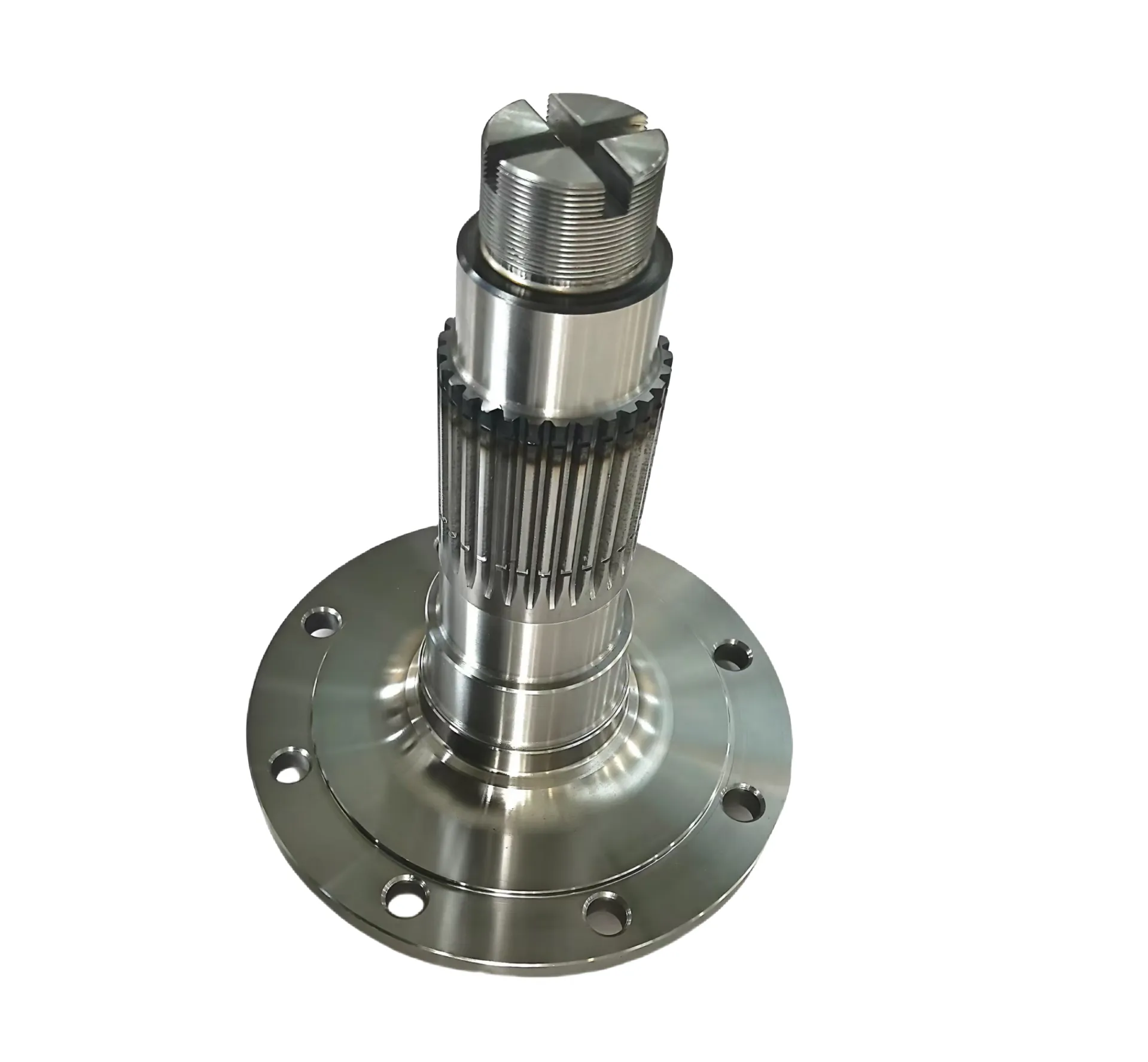
Discover high-performance sprocket gears for robust power transmission. Our precision-engineered cycloidal and internal gears ensure durability and efficiency in industrial machinery, automation, and robotics. Explore our solutions today!
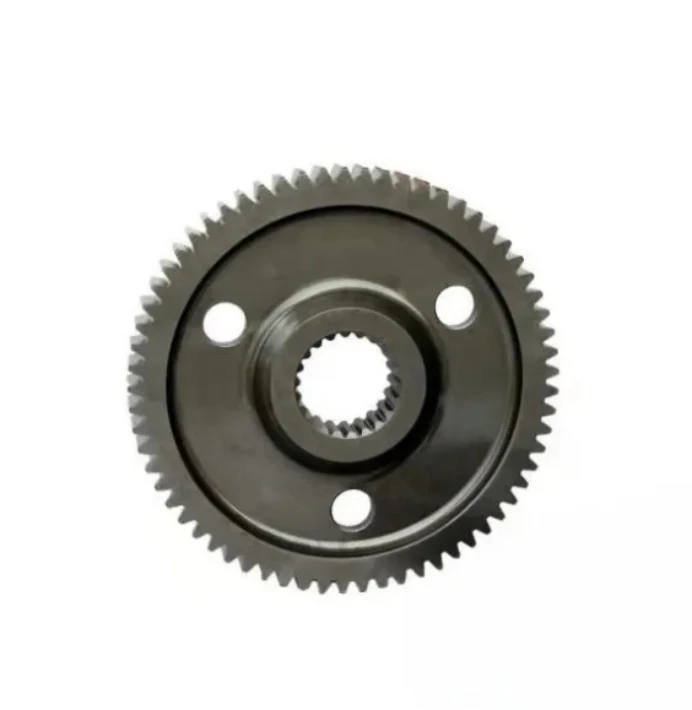
The global rear end gears and quick change gear rear end market is witnessing robust growth, particu
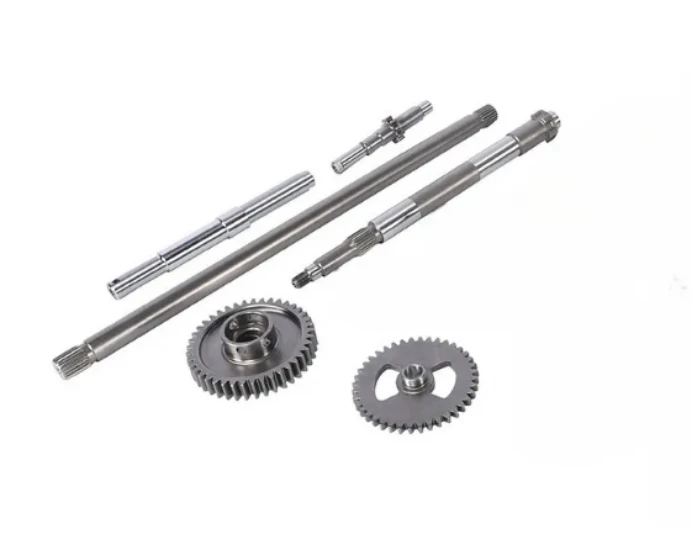
Gear shafts are fundamental mechanical components, serving as the backbone of power transmissio
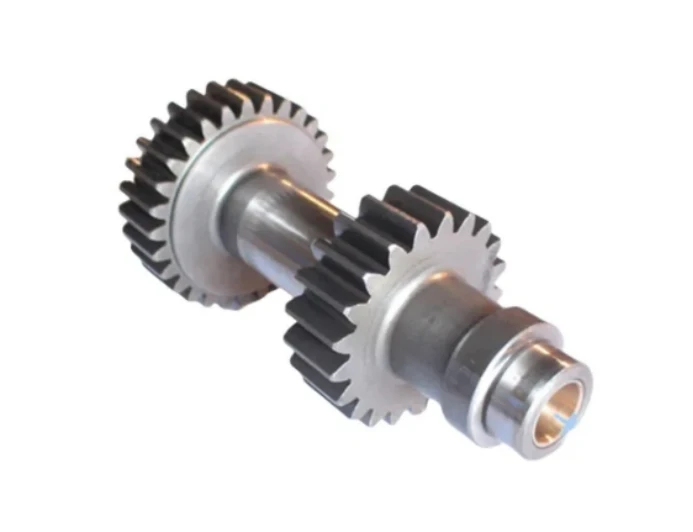
In the intricate world of mechanical engineering and power transmission, the concept of an outp
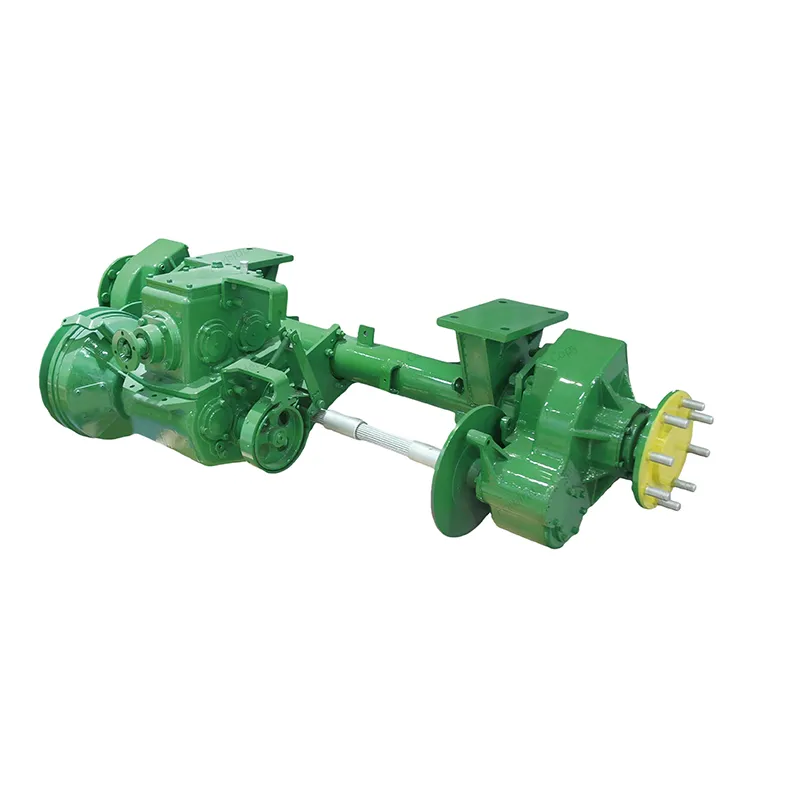
Elevate your build with an AWD K Series transmission, ensuring superior wheel transmission and grip. Perfect for performance cars needing to convert from 2 wheel drive transmission. Enhance traction & power. Shop our reliable K-series AWD solutions today!
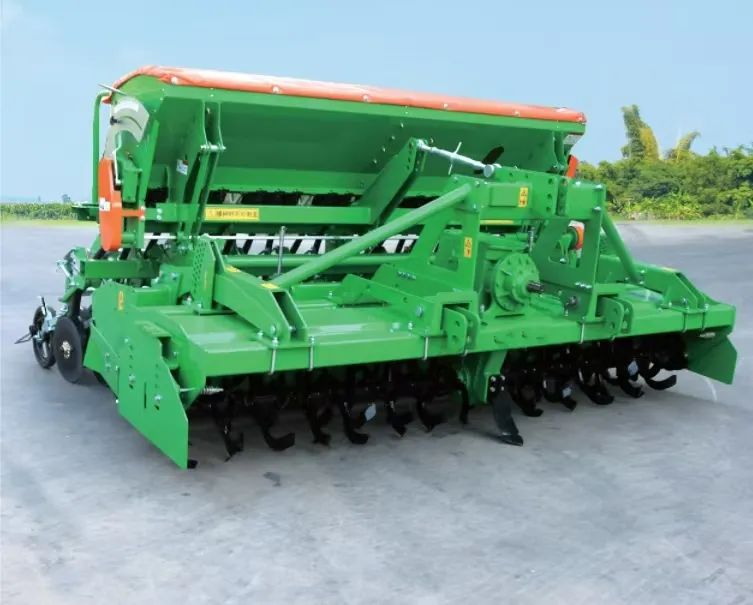
Get the ultimate compact seed drill for sale! Our precise disc drill seeder ensures efficient planting for small farms and diverse crops. Experience minimal soil disturbance with our durable disc seed drill. Shop now for superior results!
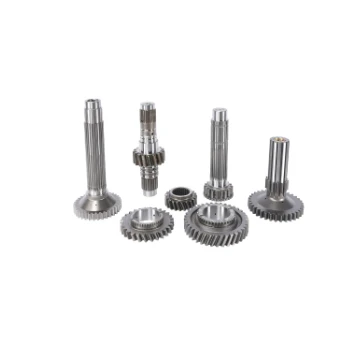
The agricultural and industrial machinery sector is experiencing remarkable growth, and at the heart of this expansion lies the trade and supply of tractors.
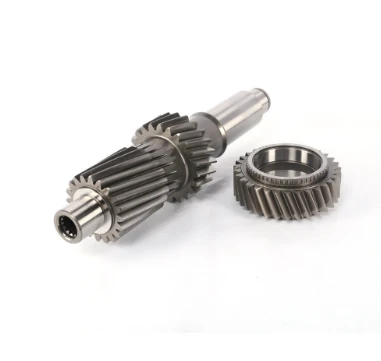
In the world of heavy - duty construction, the seamless operation of machinery is crucial for large - scale projects.
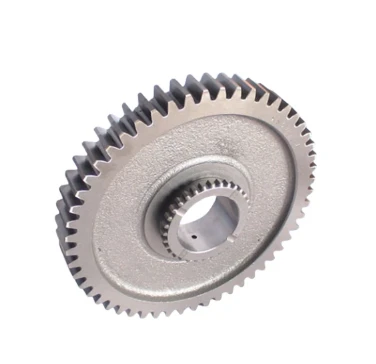
The world of tractors is vast and varied, catering to both practical agricultural needs and the passionate interests of collectors.
International layout
Spread all over the world
our products are exported to various parts of the world. Currently, our products have been exported to more than 40 countries Our products cover Asia, Europe, Africa, South America, North America, and Oceania
Sign up
for Newsletter
Subscribe to the weekly newsletter for all the latest updates


